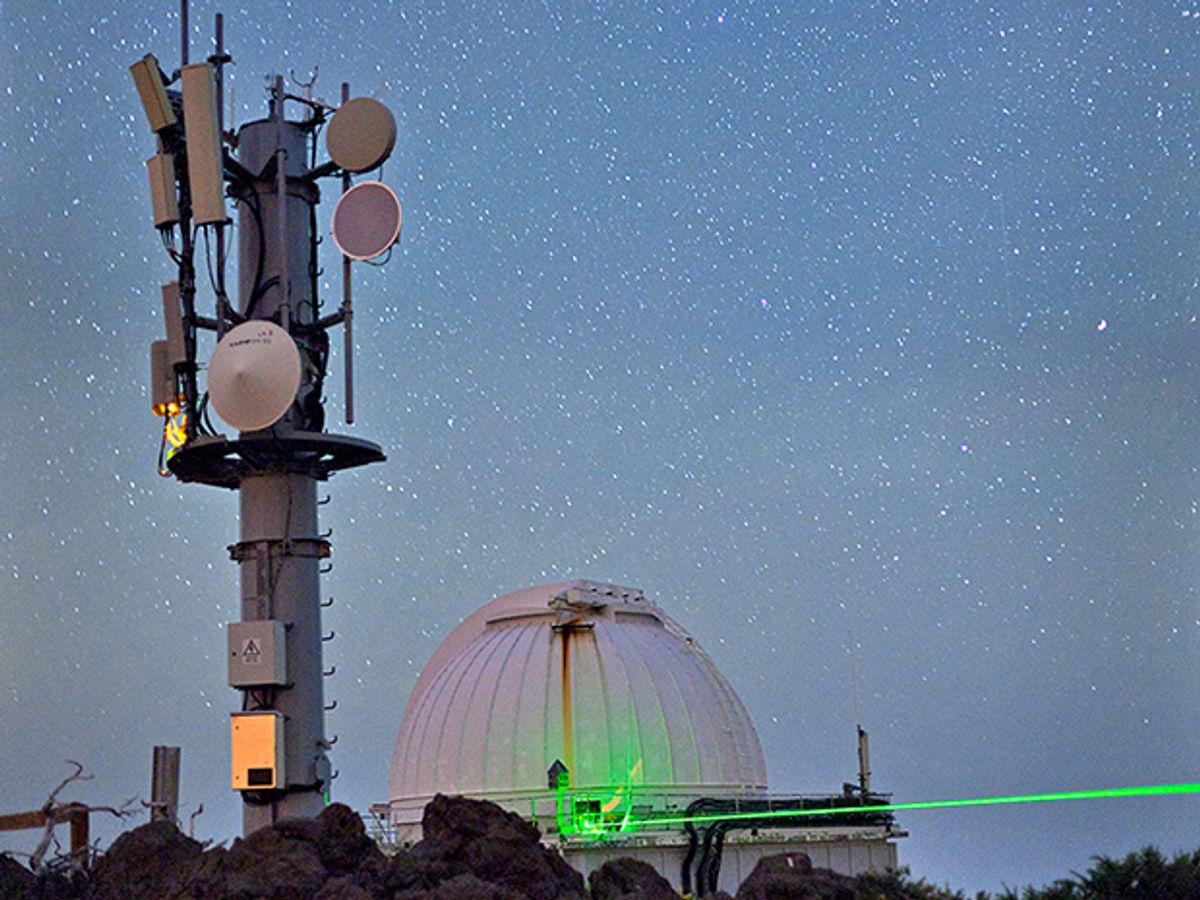During the past three decades, the theory of quantum communication and computing has progressed with the addition of new protocols and algorithms. However, implementing these theories in order to design a future quantum Internet is a continuing challenge because actually building the technology required for processing quantum information, such as the still elusive quantum repeater, has proven extremely difficult.
Anton Zeilinger, a researcher at the University of Vienna, is one of the pioneers in quantum communication; his group in Austria realized the first teleportation of photons in 1997. On Monday last week, Zeilinger and his team published two papers in the Proceedings of the National Academy of Sciences (PNAS) that report a breakthrough in the teleportation of entanglement. They generated entanglement between independent qubits over a record distance of 143 kilometers, linking the Canary Islands of La Palma and Tenerife. They also achieved entanglement of twisted photons across a distance of 3 km.
For the teleportation of entanglement, also known as entanglement swapping, the researchers made use of a curious phenomenon. It’s possible to entangle two photons by performing a joint measurement on them, known as a Bell-state measurement. These photons are then linked, and by switching the polarization of one of them, for example from up to down, the other photon will have its polarization switched from down to up. Assume you have two pairs of entangled photons, "0" and "1" in the receiving station and "2" and "3" in the transmitting station. Both entangled pairs are completely unaware of each other; in other words, no physical link exists. Now, assume you send photon 3 from the transmitter to the receiver, and perform a Bell-state measurement simultaneously on photon 3 and on photon 1. As a result, 3 and 1 become entangled. But surprisingly, photon 2, which stayed home, is now also entangled with photon 0, at the receiver. The entanglement between the two pairs has been swapped, and a quantum communication channel has been established between photons 0 and 2, although they’ve never been formally introduced.
Entanglement swapping in conjunction with quantum memory will be an important component of future secure quantum links with satellites, says Thomas Scheidl, a member of Zeilinger's research group.
According to Mario Krenn, a member of Zeilinger’s research group, the team is working with a group at the University of Science and Technology of China on a satellite project. Next year, when the Chinese Academy of Science launches its Quantum Science Satellite (which will have an onboard quantum source), the satellite and ground stations in Europe and China will form the first space-Earth quantum network. Says Krenn: “You would create two quantum channels between the space station, one linking with Europe, and one with China. You can combine the results and obtain 100 percent secure quantum communication.”
Krenn is a coauthor of the second PNAS paper, which describes the entanglement of twisted photons despite having been located in buildings that are 3 km apart. A year ago, we reported in IEEE Spectrum the Vienna team's experiment with the transmission of another quantum state of light, orbital angular momentum (AOM), over a similar distance. “Last year was a necessary step, and it was successful,” says Krenn. “And now we were able to show that on the single photon level, each photon can keep information in the form of orbital angular momentum over a large distance, and can be entangled even after three kilometers.”
Photons can only exist in two polarization states or levels, up and down. But the number of orbital angular momentum states is, in theory, unlimited, explains Krenn. “In the lab, we have shown that we can create a 100-dimensional entanglement—up to a hundred different levels of the photons can be entangled.”
To find out whether entanglement with OAM modes can be achieved across a turbulent atmosphere, the researchers created polarized photon pairs in the sender. Both were sent (one with a delay) to the receiver via a 30-meter optical fiber. Before being sent to the receiver, the photon sent without delay had its polarization state transformed into one of two OAM states that corresponded to the original polarization state. By performing separate but simultaneous measurements of the quantum states of both the slightly delayed photon in the sender and the photon detected in the receiver, the researchers found that the two photons were entangled.
“We were sure that entanglement took place,” says Krenn. “The measurements were prepared in such a way that there was no classical [not quantum] bypass of information.” Krenn notes that the measurement results could not influence each other because the distance was too large even for a speed-of-light signal to traverse the stations when the first one was measured.
The control of twisted quantum states is much more complicated than the control of polarization states, but the possibility of being able to entangle photons on multiple levels is worth the effort, says Krenn.



